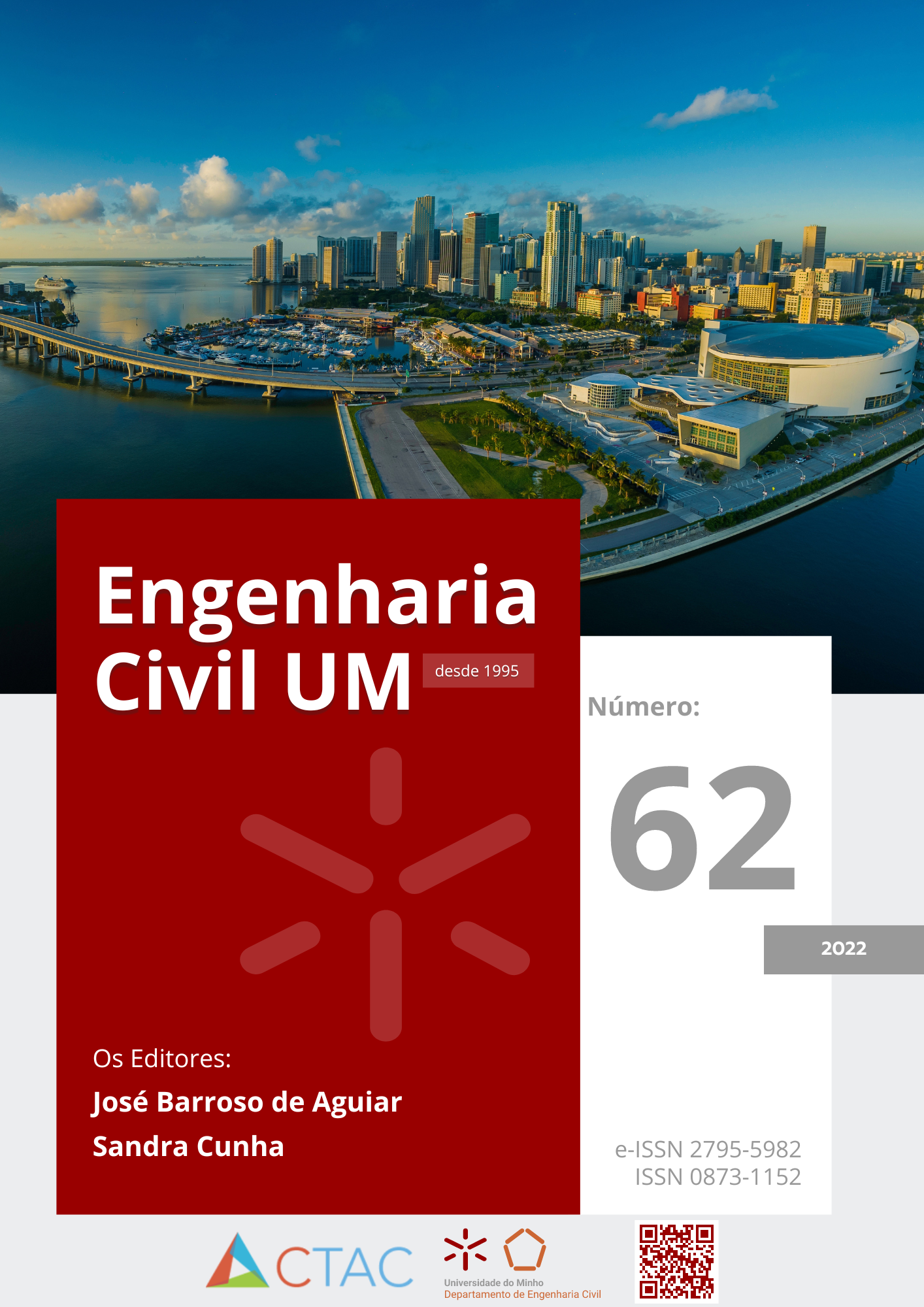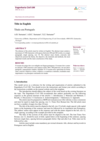Analysis of Bernoulli and Timoshenko beam theories for beams in different boundary conditions
DOI:
https://doi.org/10.21814/ecum.4491Abstract
In this article, the structural behavior of beams is analyzed using the beam theories of Bernoulli and Timoshenko, changing the relationship between the span and the height of the cross section and varying the boundary condition of the structural element. The geometry of the structural elements analyzed were beams of rectangular section, it could be seen that for isostatic beams the effect of distortion due to shear (Timoshenko's theory) has little influence on the increase of displacements, in continuous beams this effect has a greater contribution, while for fixed ends beams this effect contributes significantly to the increase of displacements in the structure. Limit relationships of span size and cross-section height as a function of the boundary condition were proposed for the consideration of shear distortion.
References
A. Faghidian. Unified Formulations of the Shear coefficients in Timoshenko Beam Theory. J. Eng. Mech., 143 (2017). https://doi.org/10.1061/(ASCE)EM.1943-7889.0001297. DOI: https://doi.org/10.1061/(ASCE)EM.1943-7889.0001297
K. T. Chan, K. F. Lai, N. G. Stephen, K. Young. A new method to determine the shear coefficient of Timoshenko beam theory. J. Sound and Vib., 14 (2011) 3488-3497. DOI: https://doi.org/10.1016/j.jsv.2011.02.012
S. B. Dong, C. Alpdogan, E. Taciroglu. Much ado about shear correction factors in Timoshenko beam theory. Int. J. Solids Struct., 13 (2010) 1651-1665. https://doi.org/10.1016/j.ijsolstr.2010.02.018. DOI: https://doi.org/10.1016/j.ijsolstr.2010.02.018
L. F. Martha, R. Burgos. Diferenças na consideração da distorção no modelo de Timoshenko de uma viga submetida a carregamento axial, In: XXXVI Jornadas Sul Americanas de Engenharia Estrutural, 12-14 de Novembro, Montevidéu, Uruguai, 2014.
S. Timoshenko, J. Gere. Mecânica dos Sólidos, Livros Técnicos e Científicos, 1994.
S. Timoshenko, J. N. Goodier. Theory of Elasticity, McGraw-Hill, New York, 1970.
S. B. Dong, S. Çarbas, E. Taciroglu. On principal shear axes for correction factors in Timoshenko beam theory. Int. J. Solids Struct., 50 (2013) 1681-1688. https://doi.org/10.1016/j.ijsolstr.2013.01.034. DOI: https://doi.org/10.1016/j.ijsolstr.2013.01.034
R. Barretta, A. Barretta. Shear stresses in elastic beams: an intrinsic approach. Eur. J. Mech. A Solids, 29 (2010) 400-409. https://doi.org/10.1016/j.euromechsol.2009.10.008. DOI: https://doi.org/10.1016/j.euromechsol.2009.10.008
H. L. Soriano. Análise de Estruturas - Formulação Matricial e Implementação Computacional, Editora Ciência Moderna Ltda, Rio de Janeiro, 2005.
Associação Brasileira de Normas Técnicas (ABNT). NBR 6118, Projeto de Estruturas de Concreto – Procedimento, 2014.
L. F. Martha. Análise de estruturas: conceitos e métodos básicos, Elsevier, Rio de Janeiro, 2010.
J. Silva, I. Lemes, R. Silveira, A. Silva. Influência da teoria de viga na análise geometricamente não linear de estruturas reticuladas, In: Proceedings of the XXXVII Iberian Latin-American Congress on Computational Methods in Engineering, 6-9 de Novembro, Brasília, DF, 2016.
Downloads
Published
How to Cite
Issue
Section
License
Copyright (c) 2022 T. C. Silva

This work is licensed under a Creative Commons Attribution 4.0 International License.








